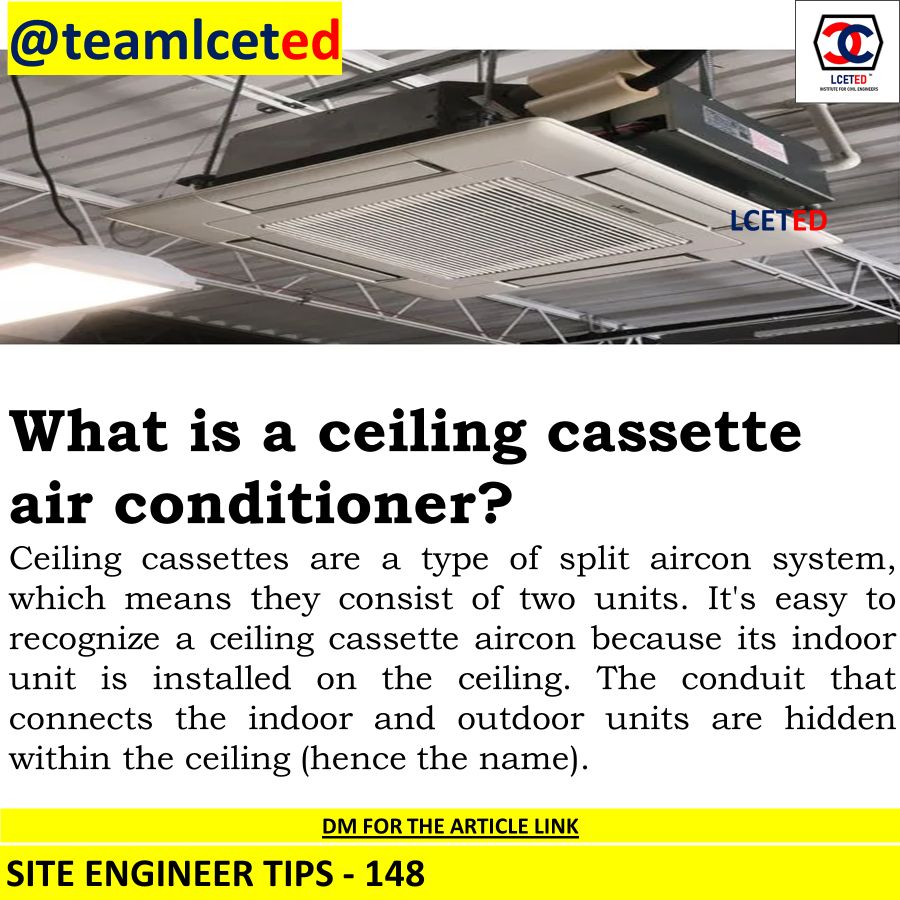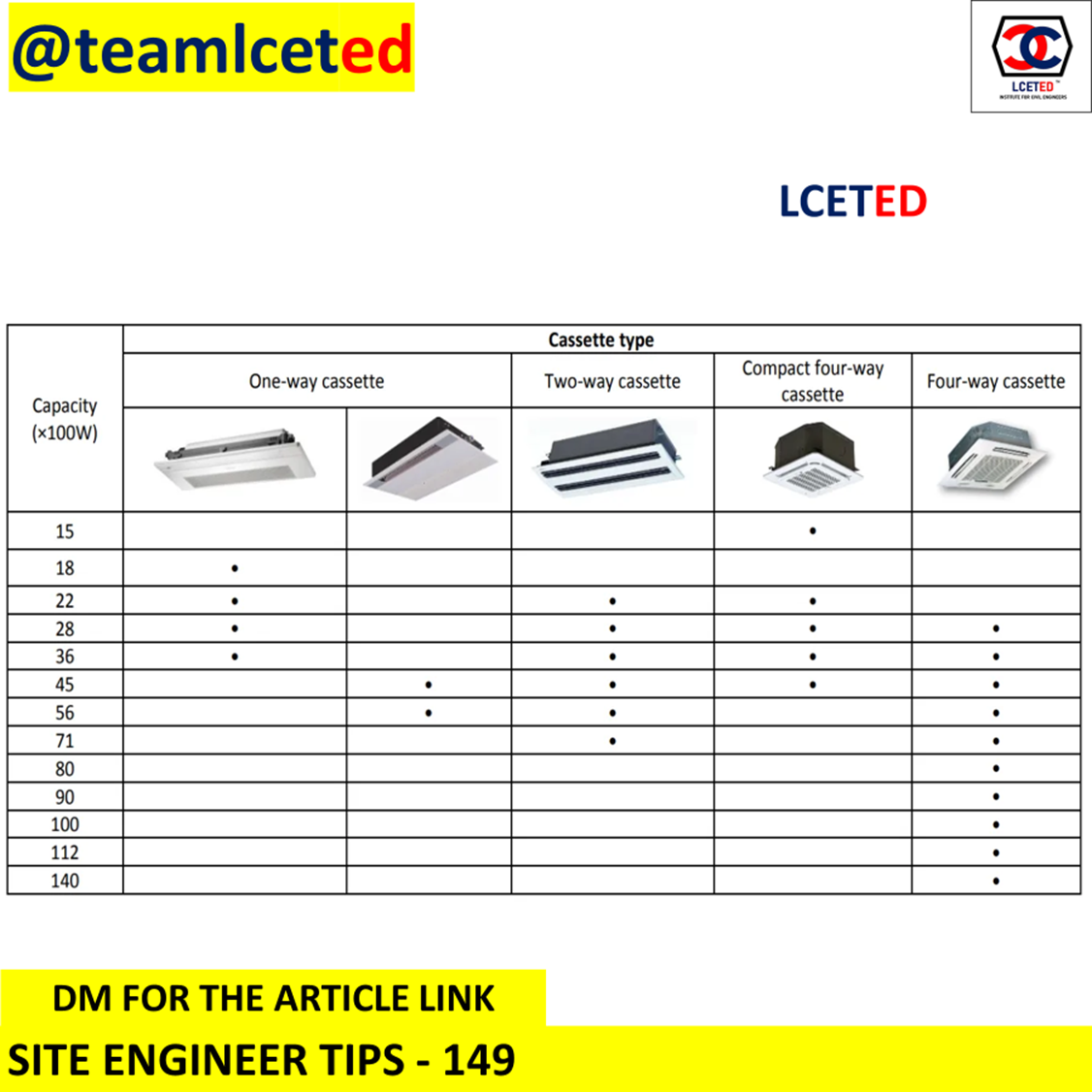What is cassette Unit?
A cassette air conditioner is basically a type of split system, as it consists of two units; One is installed inside and the other outside. The difference with cassette-type air conditioners is that the indoor unit is installed on the ceiling.
The indoor unit is a grill mounted
that supplies hot or cold air through vents and does not require ductwork. The
pipe connecting the indoor and outdoor units is hidden in the ceiling space
(Ceiling cavity). The unrestricted design makes it ideal for offices and other
commercial applications, as well as homes and apartments.
Cassette air
conditioning systems are also quiet, using powerful fans to exhaust air will
have the noisiest part of the system, the condenser (or compressor system), is an outdoor unit.
Process of AC Cassette System
A cassette air conditioner works like
any other split system. The real difference though is that the cassette head
unit is mounted flush to the ceiling for a sleeker look. It draws air into the
center of the main unit and cools or heats it depending on which mode you have
set it to. Start ventilating the space immediately with a "4-way"
ventilation system.
So therefore, the cassette air
conditioner eliminates odors, contaminants, dust, and excess moisture from the
air and replaces them with cold or hot air. With ceiling air conditioners no
ductwork is required, and the outdoor condenser can power more than one indoor
unit, so ceiling grills can be installed in multiple rooms if required.
Cold or warm air
is sent downwards through the vents of the inner cassette by powerful fans in
two, three, or four directions. Along with the more common square models, there
are also circular models that offer 360-degree coverage, giving you constant
airflow.
Advantages of cassette air
conditioners:
1. Compactness: A cassette air conditioner fits
perfectly into the ceiling and does not take up space on the walls of your
home.
What is better Cassette AC or Split
AC?
The cassette unit's powerful cooling,
along with its (more or less) central location on the ceiling, makes it ideal
for large living and dining areas where wall-mounted split air conditioners are
ineffective.
2. Energy savings: Cassette air conditioners heat or
cool rooms quickly and efficiently, which means energy is saved when the
desired temperature is reached.
3. Air distribution: Cassette air conditioning units send
air evenly in all directions.
4. Cassette system supplies both heat and
cool air without any noise.
5. These air conditioning systems are
used in offices and other large spaces, so if you've got an open-plan design,
it's perfect for your home. Smaller units are also suitable for smaller spaces.
6. Cassette air conditioners are
stylish and easily fit into most designs’ ideas for home and commercial.
7. Cassette air
conditioners last for years and are easy to service and maintain. yearly
service is recommended, and as with other split systems, you should wipe the
vents with a dry cloth and clean or replace the air filters frequently.
8. Temperature can be controlled with
a programmable thermostat for added comfort and convenience.
What is a programmable thermostat?
A programmable thermostat is a
thermostat that can adjust home heating and cooling equipment according to a
pre-set schedule.
For example, a
programmable thermostat can be set to maintain a home temperature of 24 degrees
throughout the day and 45 degrees after 11:00 PM to 7:00 AM daily.
Disadvantages of cassette air
conditioners:
1. Some houses are not suitable for
cassette-type air conditioners. You need space in your ceiling cavity and on
your ceiling. The unit can be powered by lighting and/or ceiling fans.
2. For supplying heat or cool air to
your entire home, you'll need multiple indoor grills.
3. The indoor grill is quiet, we want to
be careful on installing the outdoor unit as it can be noisy.
4. It's more expensive to purchase and install compared to a standard wall-mounted split system.









No comments:
Post a Comment